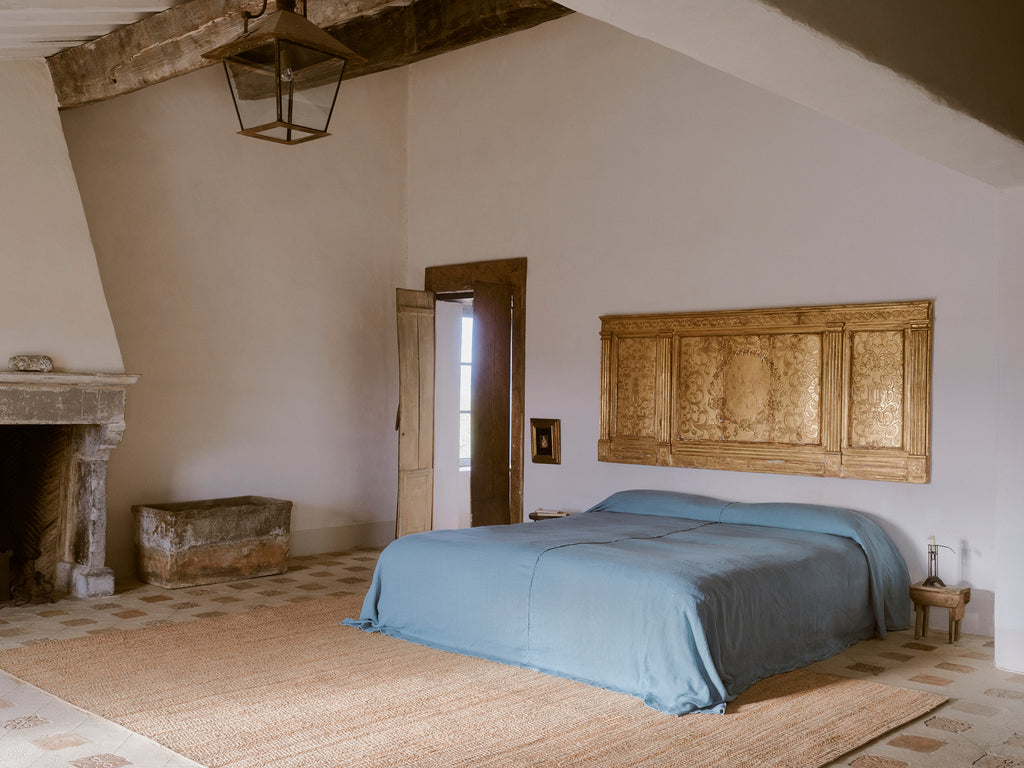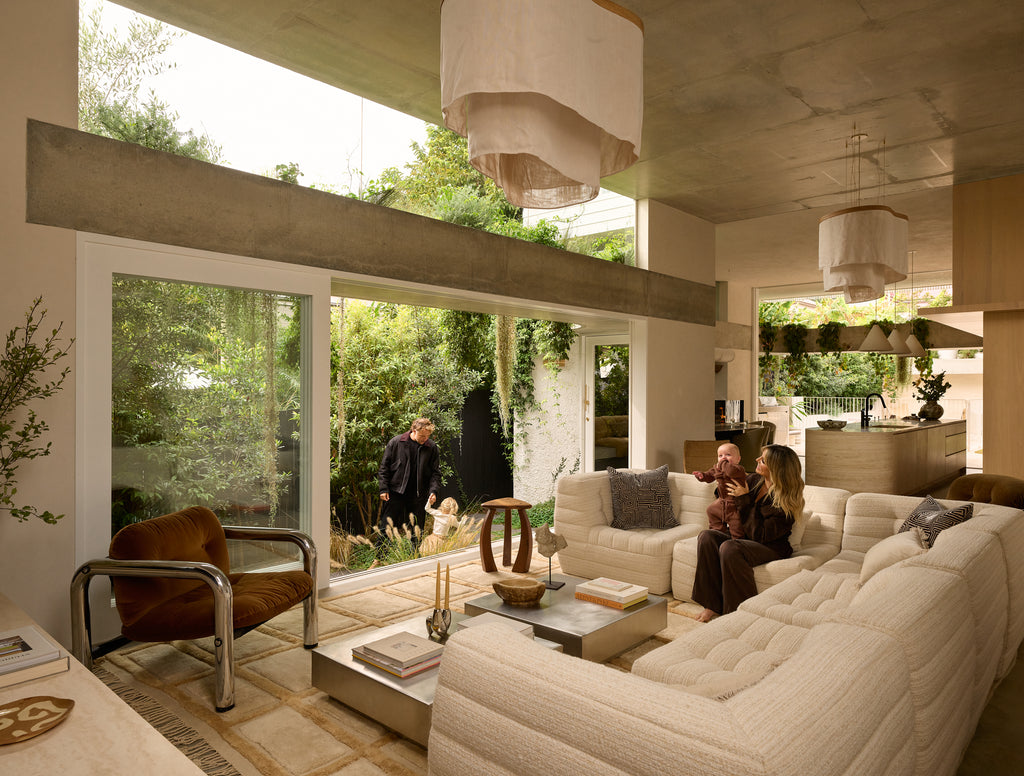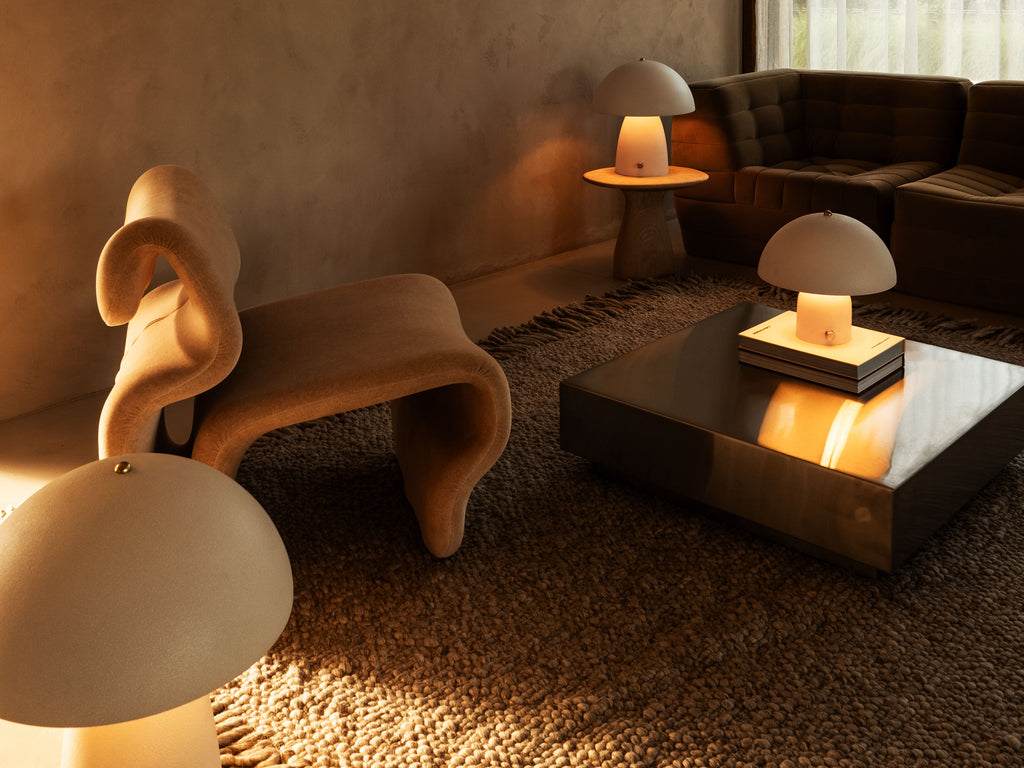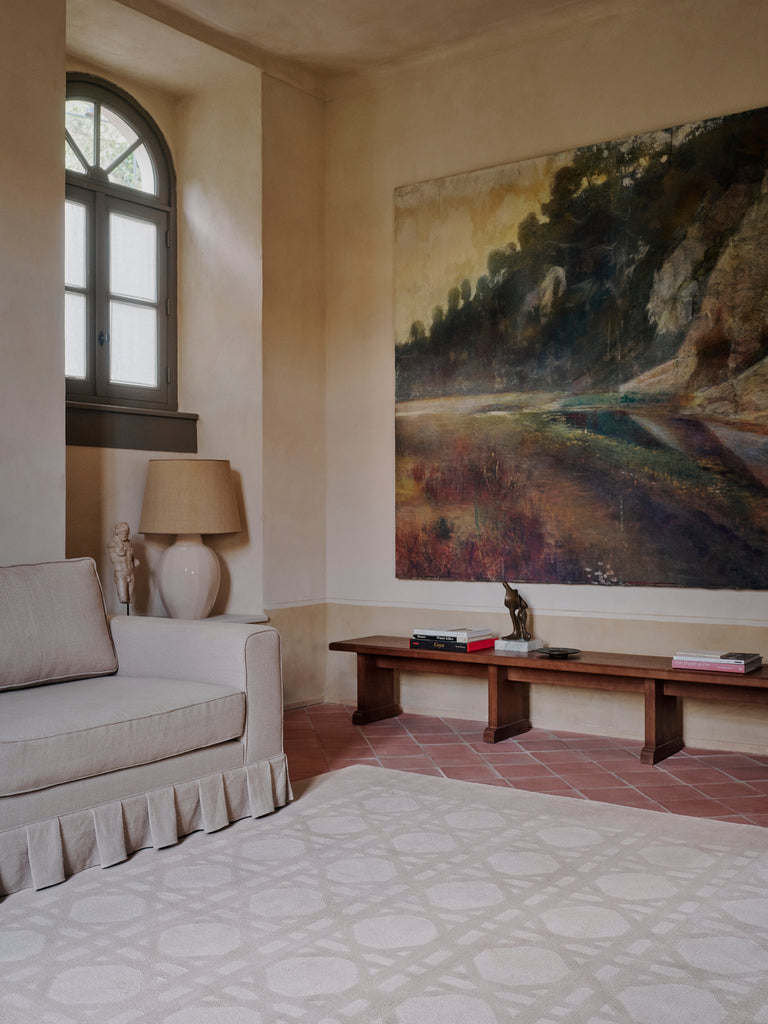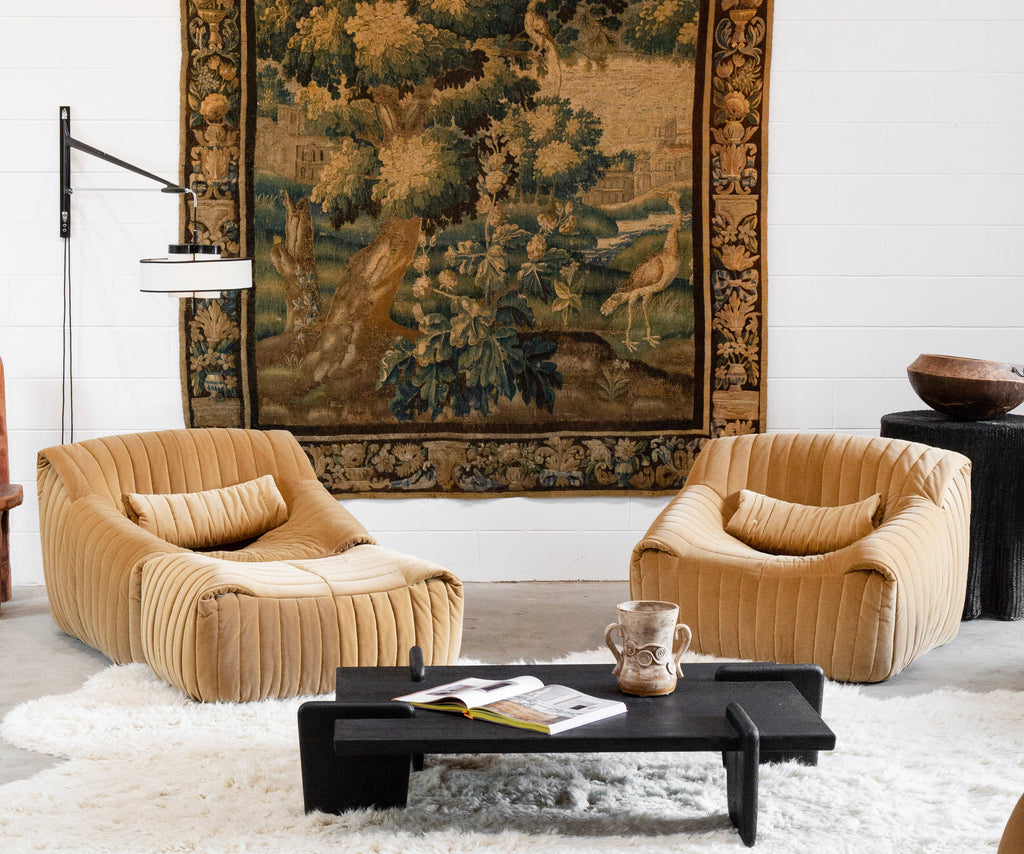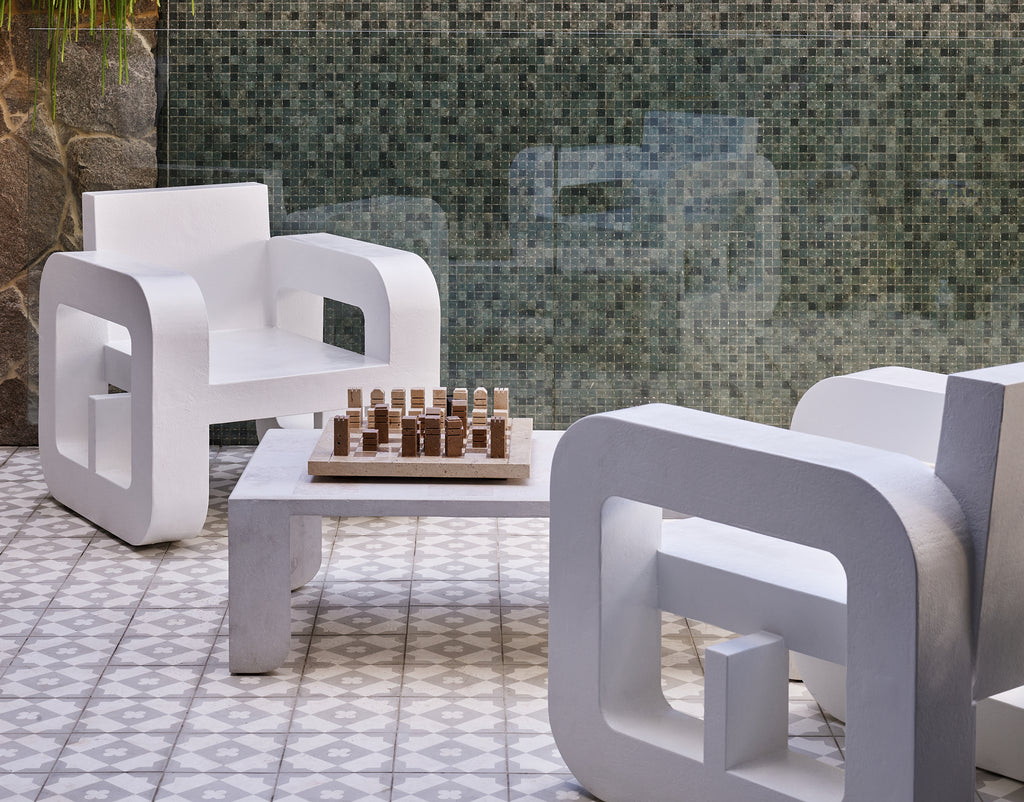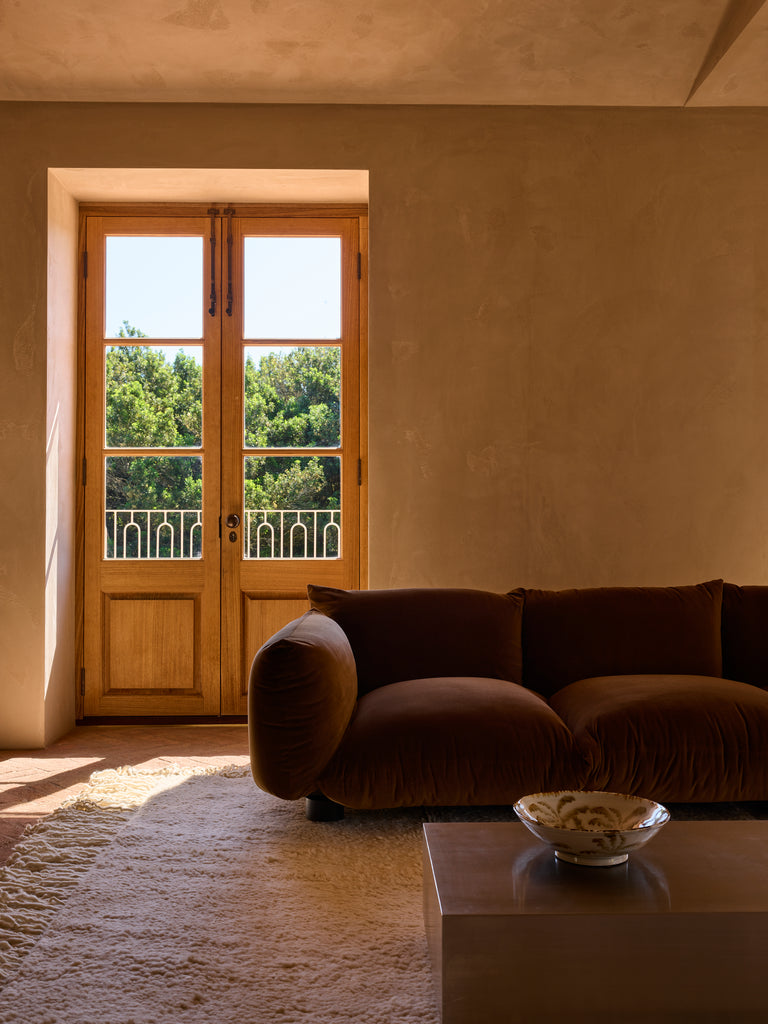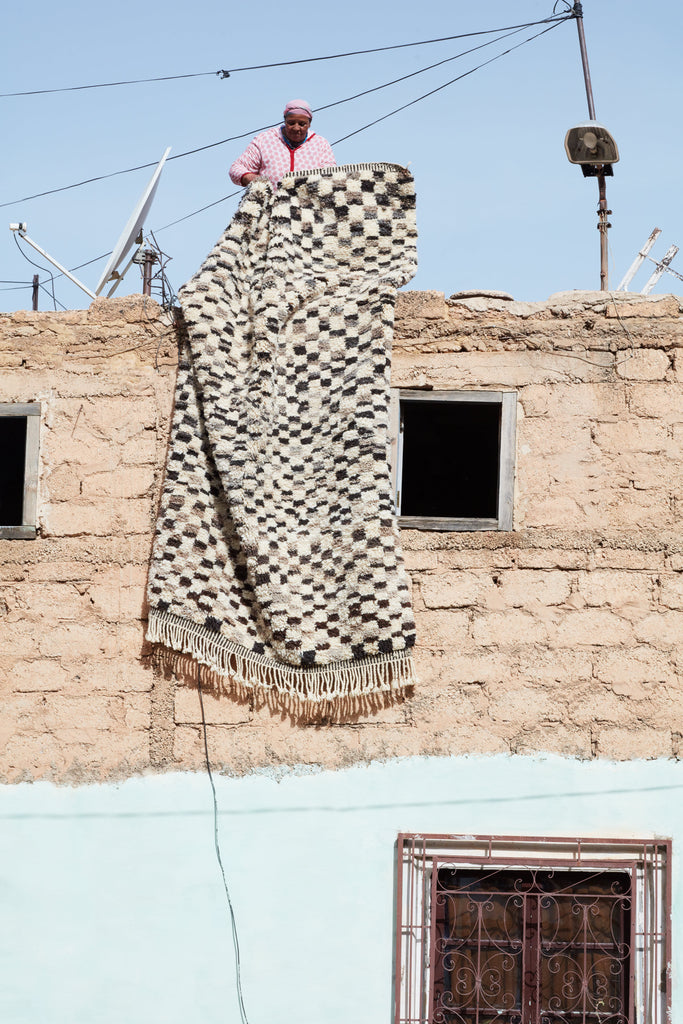
Tête-à-tête
Laurence Leenaert from LRNCE
Surrounded by palms and the carefree spirit of the locals of Marrakech, founder of LRNCE Laurence Leenaert revises the purpose of materials and spontaneously combines elements to create uniquely designed and awesomely artful pieces. By sourcing production in North Africa she captures the essence of craftsmanship and the time honoured skills of local artisans. We gathered some insight from two of the makers she works with and were so pleased to steal some of her time for a quick interview.
Launching her brand in 2013 after studying fashion design in Ghent, Belgian sun chaser Laurence made the decision to take her work to Marrakech. Armed with just 400 Euros and a sewing machine, she began working with local makers to produce artistic and carefully handmade products.
LRNCE are known for their distinctive patterns and colours that openly reference Picasso's ceramics and Miro's line-work in composition with Moroccan tribal patterns. Creating the most playfully covetable collections, Laurence who is both an artist and designer uses almost anything as her medium — from mirrors, shoes, paintings and ceramics.


Hand-made and hand painted in reds, yellows and blues, her ceramics are all one-off artworks that are made with the help of local artisans, whose patience and craftsmanship she says, is an important source of inspiration - particularly when it comes to their ceramic pieces made from terracotta based clay.
LRNCE'S appreciation of terracotta started some kilometres outside of Marrakech, where she spent two years leaning about the fabrication process of ceramics with a passionate family business.
From the modelling to the firing of the clay to painting two artisans that work with LRNCE, Yousef and Hassan explain the ceramic process.
Where does the clay come from?
Safi, Morocco. The terracotta clay is transported to Marrakech from this coastal town that is considered as the capital of Moroccan pottery.
How do you prepare the clay for throwing?
The clay arrives in a block. To make it easier to work with, the clay goes through a process that begins with placing the block in a large ceramic basin and mixing it with water, it is left like the for 7 days. On day 8 the artisans knead and work the clay using their feet. This is repeated for 3 days with a break between each day. The last kneading is done by hand. The technique is very important to make the clay malleable and to ensure there are no air bubbles trapped inside that could lead to the piece cracking or breaking.



How long does it take to make a vase, and how many people are involved?
After the clay has been prepared and thrown, it takes 5 days to complete. There are 10 people in the team.
How did the artisans learn the craft?
The artisans come from Safi, a place known for its craft so they are taught the skills and knowledge through the passing down of generations.
Can you explain the process?
Once the ceramic piece has been thrown, it is left out in the sun to dry. Then it is bisque fired in the kiln for 8 hours - a process that converts the clay into a durable material, through a high temperature that reaches 1500 degrees celcius.
Next, white clay powder and water are mixed together and a thin layer is applied to the ceramic piece, which is then left out in the sun. Once the ceramic has dried the piece is ready to be hand-painted. When the design is complete, a final glaze fixes the design to the ceramic piece and gives it a smooth and shiny finish.
What makes Moroccan pottery special?
The pottery is know for its use of traditional floral motifs and geometric designs. The clay from Safi is known for its metal inlays - with zinc and copper - and is often made of a red clay.
You studied design in Ghent before starting your brand in Morocco. What eventually led you to move to Marrakech?
I loved the desert, I was in the desert with my sister in 2014 for one week and loved it so much that I went back for one month, just me and my sewing machine. After this month I decided to move to Morocco, Marrakech seemed like the perfect place to go.
What was the original vision for LRNCE and how has it evolved since then?
In 2014 I started to make bags out of my own designed woven fabrics. When I moved to Marrakech the idea was to focus on the bags, but I went in a totally different direction, a very unexpected one.
Can you tell us a bit about the process of collaboration with the local craftsmen of Marrakech? How do they respond to your designs?
I'm surrounded by talented artisans who have a lot of patience to make beautiful things. It was not easy to find the right person to work with because they need to understand you and your work and apply their knowledge to arrive at the end result. In the beginning they didn't really understand what I wanted to do, especially the pottery, they thought it was horrible what I was drawing on the pieces. I was in the right time and moment and I met wonderful people who I still work with after 3 years, they are very important and close to me, like friends. There is a connection and I always felt very welcome and appreciated and this is very important if you work together.
What is it about Marrakech that gives you freedom to create and what influence do you think this leaves on your work?
There is not a stressful atmosphere, only chaotic. You are far away from the fashion world because, nobody actually really cares about fashion or the new trends. There are other more important things in life and being there makes you realise this, and I think this is why it works for me. I have no pressure, the time to create what I like and love to do without anybody judging. It's very motivating!
Tigmi is Berber for ‘my home’ what aesthetic do you enjoy at home?
White walls and colourful object and textiles. Combinations of different materials.


Tigmi have just received beautiful new ceramics from LRNCE
— SHOP NOW


